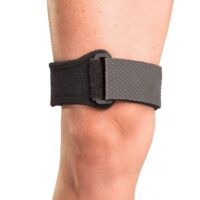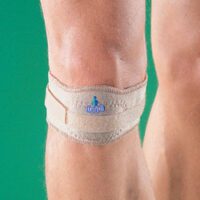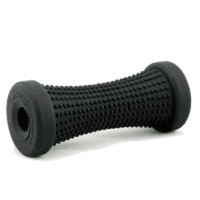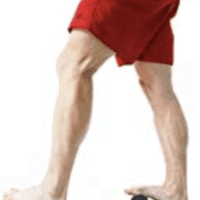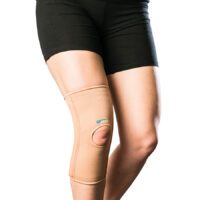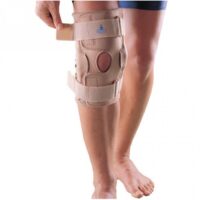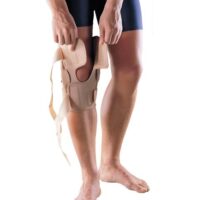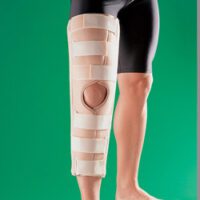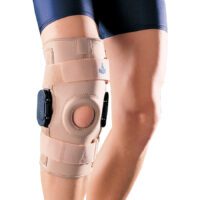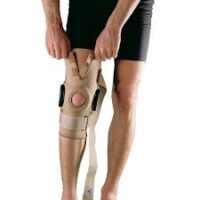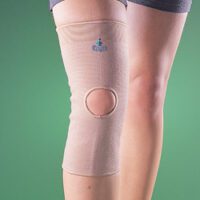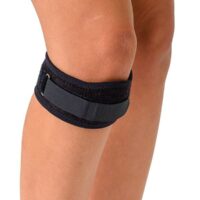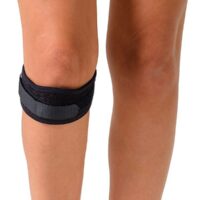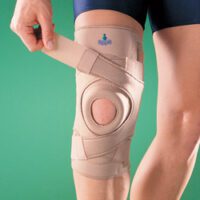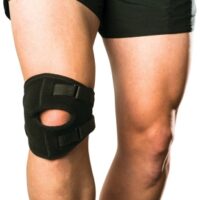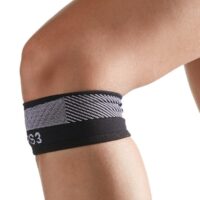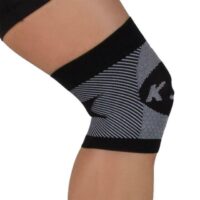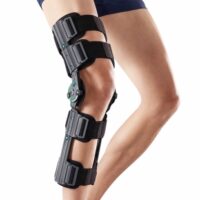MCL Sprain - Medial Collateral Ligament Injury
Article by John Miller


MCL Sprain
Medial Collateral Ligament Sprain
Knee injuries, particularly MCL (Medial Collateral Ligament) sprains, are common yet often misunderstood. As a vital ligament, the MCL links your thigh bone to your shin bone, stabilising your knee. Understanding how these injuries occur and the role of physiotherapy in recovery is crucial.
What Causes a MCL Sprain?
Typically, a direct blow to the outer knee causes MCL sprains. However, twisting motions or awkward landings can also be to blame. Activities requiring quick direction changes put your MCL under stress. Additionally, muscle imbalances, previous knee injuries, or poor balance can increase risk.
Diagnosing an MCL Injury
Physiotherapists play a key role in diagnosing MCL injuries. They’ll review your injury circumstances and examine your knee for swelling or tenderness.
Physical Examination:
A physiotherapist will assess the knee’s movement and stability. An MCL stress test may be performed to check ligament integrity.
Imaging Tests:
In some cases, MRIs or X-rays are necessary to visualize the injury extent.
MCL sprains are classified into three grades:
- Grade I: Mild injury with tenderness and minor pain.
- Grade II: Partial tear with noticeable knee looseness.
- Grade III: Complete ligament tear, leading to knee instability.
Treatment Approaches
Treatment varies based on the sprain severity. Mild cases might require rest and bracing, while severe injuries could need surgery. Physiotherapy is crucial across all stages, aiding in knee function restoration.

The Benefits of Physiotherapy for MCL Sprains
Accelerated Healing Process
Physiotherapy significantly enhances the healing process of MCL sprains. Specialised exercises and techniques employed by physiotherapists can increase blood flow to the injured area, speeding up the repair of the damaged ligament.
Reduced Pain and Swelling
Effectively managing pain and swelling is crucial following an MCL injury. Techniques such as ice therapy, compression, and elevation are pivotal in reducing swelling. Gentle exercises and manual therapy also play a key role in alleviating pain by releasing endorphins, the body’s natural painkillers.
Restoring Range of Motion
MCL sprains often lead to a restricted range of motion in the knee. Physiotherapy exercises aim to gradually restore this flexibility and movement. Stretching and strengthening exercises target not just the knee, but also the surrounding muscles, enhancing overall knee functionality.
Strengthening Surrounding Muscles
A vital benefit of physiotherapy is its focus on strengthening the muscles around the knee, particularly the quadriceps and hamstrings. Stronger muscles around the knee provide better support to the joint, thus reducing the likelihood of future injuries.
Improving Balance and Coordination
Impaired balance and coordination are common after MCL injuries. Physiotherapists use specific exercises designed to enhance proprioception — the body’s ability to sense movement and position. Improved proprioception helps prevent awkward movements, reducing the risk of further injury.
Personalised Treatment Plans
Physiotherapy offers personalised treatment plans, tailored to the individual’s specific injury, lifestyle, and recovery goals. This customised approach ensures the most effective and suitable recovery process.
Preventing Surgical Intervention
In many instances, physiotherapy can help avoid the need for surgical intervention. Even in severe cases of MCL sprains, a combination of physiotherapy techniques can sufficiently heal and restore knee function, eliminating the need for invasive procedures.
Education and Future Injury Prevention
Physiotherapists not only treat the injury but also educate patients on preventing future injuries. This includes advice on proper techniques in sports, ergonomic adjustments in daily activities, and exercises to maintain knee health.
Holistic Approach to Health
Physiotherapy takes a holistic approach, considering the patient’s overall health and lifestyle. This ensures that recovery from an MCL sprain is integrated into the patient’s daily routine, making the rehabilitation process more effective and sustainable.
Conclusion
In summary, physiotherapy offers a multitude of benefits for those suffering from MCL sprains. From speeding up the healing process and reducing pain, to preventing future injuries and potentially avoiding surgery, the role of physiotherapy is integral in the recovery journey and long-term knee health. It’s important to consult with a qualified physiotherapist to receive a treatment plan that’s specifically designed for your needs and recovery objectives.
What to Do?
If you think you’ve sustained an MCL sprain, consult a physiotherapist immediately. They’ll provide a comprehensive assessment and a tailored recovery plan, ensuring a safe and effective return to your daily activities.
Rochedale - Call 38410277
Book Online: RochedaleSalisbury - Call 32751044
Book Online: SalisburySandgate - Call 32691122
Book Online: SandgateRelated Articles
- Knee Ligament Injury – Physiotherapist Guide & Tips: Offers a comprehensive overview of various knee ligament injuries, crucial for understanding the broader context of MCL sprains.
- Can You Walk with a Torn Knee Ligament?: Knowing when you ae making a problem better or worse.
- Ligament Injury Guide: Symptoms, Prevention & Treatments: Explores different types of ligament injuries, their symptoms, and prevention methods. It’s a great resource for understanding the wider scope of ligament-related issues.
- Knee Sports Injuries: This article provides insights into various sports-related knee injuries, a common context for MCL sprains.
- Meniscus Tear: Meniscus tears often accompany ligament injuries in the knee, making this a relevant article for someone dealing with an MCL sprain.
- ACL Injury: As another common knee ligament injury, understanding ACL injuries can provide a more comprehensive view of knee health and injury prevention.
- Quadriceps Tendinopathy: Since the quadriceps muscle plays a role in knee stability, understanding its tendinopathy is beneficial for those with MCL sprains.
- Knee Pain FAQs: Answers common questions about knee pain, which is highly relevant for anyone experiencing an MCL sprain.
Article by John Miller
Knee Pain Causes
Knee Pain Causes: An In-Depth Guide from a Physiotherapist's Perspective
Knee pain is a common complaint that can significantly impact your daily life. Understanding the causes of knee pain is crucial for effective treatment and prevention. This guide explores various knee pain causes and provides insights from a physiotherapist's perspective.


Common Causes of Knee Pain
Knee pain can stem from a variety of sources, ranging from acute injuries to chronic conditions. Let's explore some common causes:
Ligament Injuries
Ligament injuries are a significant cause of knee pain. These injuries often occur during sports or high-impact activities.
- ACL Injury: The Anterior Cruciate Ligament (ACL) is crucial for knee stability. ACL injuries can result from sudden stops or changes in direction. Symptoms include pain, swelling, and instability. Treatment often involves surgery and rehabilitation.
- PCL Injury: The Posterior Cruciate Ligament (PCL) can be injured in direct trauma to the knee. This injury also leads to pain and swelling, with treatment options ranging from physical therapy to surgery.
- MCL and LCL Sprains: Medial Collateral Ligament (MCL) and Lateral Collateral Ligament (LCL) sprains result from direct blows to the knee. These injuries cause pain and instability, often requiring rest, bracing, and physiotherapy.
Meniscus Injuries
Meniscus tears are another common knee injury. The meniscus is a cartilage that cushions the knee joint.
- Meniscus Tear: This injury often occurs from twisting or rotating the knee while bearing weight. Symptoms include pain, swelling, and difficulty moving the knee. Treatment options vary based on the tear's severity, ranging from rest and physiotherapy to surgery.
- Discoid Meniscus: This congenital condition results in an abnormally shaped meniscus, leading to pain and instability. Treatment may involve surgery to reshape or remove the meniscus.
Kneecap Pain
Several conditions can cause pain in the kneecap area, affecting your ability to perform daily activities.
- Chondromalacia Patella: Also known as "runner's knee," this condition involves the softening and breakdown of the cartilage on the underside of the kneecap. It causes pain and swelling, particularly when walking up stairs or sitting for long periods.
- Patellar Tendinopathy: Also called "jumper's knee," this condition results from overuse, causing pain at the front of the knee. Treatment typically includes rest, physiotherapy, and strengthening exercises.
- Patellofemoral Pain Syndrome: This condition involves pain around the kneecap, often resulting from overuse or misalignment. Treatment includes rest, physiotherapy to improve the patellar tracking, and proper footwear.
Knee Arthritis
Arthritis is a leading cause of knee pain, particularly in older adults. It causes inflammation and stiffness in the joints.
- Knee Osteoarthritis: This degenerative condition involves the wearing down of cartilage, leading to pain and swelling. Treatment includes physiotherapy, medication, and sometimes surgery.
- Rheumatoid Arthritis: This autoimmune condition causes inflammation in the knee joints. It requires medical management and physiotherapy to manage symptoms.
Knee Tendon Injuries
Tendon injuries can result from overuse or sudden, high-impact activities.
- Patellar Tendinopathy: This injury involves the patellar tendon, causing pain below the kneecap. Treatment includes rest, physiotherapy, and strengthening exercises.
- Quadriceps Tendinopathy: This condition affects the tendon connecting the quadriceps muscles to the knee, leading to pain above the kneecap.
Muscle Injuries
Muscle strains and related conditions are common knee pain causes, especially among athletes and active individuals.
- Hamstring Strain: This injury involves the muscles at the back of the thigh. It causes pain, swelling, and difficulty bending the knee. Treatment includes rest, ice, and physiotherapy.
- ITB Syndrome: The Iliotibial Band (ITB) can become tight and inflamed, leading to pain on the outer side of the knee. Stretching and physiotherapy are essential for recovery.
Knee Bursitis
Inflammation of the bursae, small fluid-filled sacs around the knee, can cause significant pain.
- Knee bursitis: Suprapatella bursitis is a common knee bursitis.
- Pes Anserine Bursitis: This condition involves inflammation of the bursa located on the inner side of the knee. It causes pain and swelling, with treatment focusing on reducing inflammation through rest, ice, and physiotherapy.
Children’s Knee Conditions
Young athletes can experience specific knee conditions related to growth and activity levels.
- Osgood Schlatter’s Disease: This condition involves inflammation of the area just below the kneecap where the tendon from the kneecap attaches to the shinbone. It causes pain and swelling, especially during activities.
- Sinding Larsen Johansson Syndrome: This condition affects the growth plate at the bottom of the kneecap, leading to pain and swelling.
Other Knee-Related Conditions
Various other conditions can lead to knee pain, necessitating a broad understanding of potential causes.
- Runner’s Knee: This condition involves pain around the kneecap, often resulting from overuse or misalignment. Treatment includes rest, physiotherapy, and proper footwear.
- Plica Syndrome: Inflammation of the plica, a fold in the knee lining, can cause pain and swelling. Physiotherapy and anti-inflammatory medications are common treatments.
What to Do?
If you're experiencing knee pain, seeking professional advice from a physiotherapist is essential. They can provide a personalised assessment and treatment plan to address your specific needs. Early intervention can significantly improve your outcomes and help you return to a pain-free, active lifestyle.
Conclusion
Understanding the causes of knee pain is the first step towards effective treatment. By addressing the root cause, you can find relief and prevent future issues. Consult a physiotherapist to develop a tailored plan for your knee health.
Rochedale - Call 38410277
Book Online: RochedaleSalisbury - Call 32751044
Book Online: SalisburySandgate - Call 32691122
Book Online: SandgateKnee Pain Causes FAQs
- What are the main causes of knee pain?
- Common causes include ligament injuries, meniscus tears, kneecap pain, arthritis, tendon injuries, muscle strains, and bursitis.
- How can I tell if my knee pain is serious?
- Serious knee pain often involves significant swelling, inability to bear weight, or visible deformity. Consult a physiotherapist or doctor if you experience these symptoms.
- Can knee pain be treated without surgery?
- Yes, many knee pain causes can be treated with physiotherapy, rest, and non-surgical interventions.
- What is the best treatment for knee pain?
- The best treatment depends on the cause. Physiotherapy, rest, strengthening exercises, and sometimes medication or surgery are effective options.
- How can I prevent knee pain?
- Prevent knee pain by maintaining a healthy weight, staying active, wearing proper footwear, and doing strength and flexibility exercises.
- When should I see a physiotherapist for knee pain?
- See a physiotherapist if your knee pain persists for more than a few days, is severe, or affects your ability to perform daily activities.
Related Articles
- Knee Osteoarthritis - Discover effective treatments for knee osteoarthritis.
- ACL Injuries - Learn about symptoms and treatment options for ACL injuries.
- Meniscus Tear - Understand the causes and treatments for meniscus tears.
- Patellar Tendinopathy - Explore treatment options for patellar tendinopathy.
- ITB Syndrome - Find out how to manage and treat ITB syndrome.
- Hamstring Strain - Tips for recovering from a hamstring strain.
- Runner’s Knee - Effective strategies to reduce knee stress for runners.
- Knee Arthroscopy - Learn about this surgical option for knee injuries.
- Quadriceps Tendinopathy - Understand the causes and treatments for this condition.
- Knee Bursitis - Discover ways to reduce inflammation and pain from knee bursitis.
These articles provide detailed information on various knee conditions and their treatments.
Knee Pain FAQs
Knee pain is a widespread issue, impacting individuals of varying ages and lifestyles. Causes range from injuries and wear and tear to conditions like arthritis. This FAQ section aims to provide insights into knee pain, covering diagnosis, ligament issues, ACL injuries, meniscal injuries, age and arthritis concerns, and pain relief methods through exercise and treatment.
Feel free to click on the questions to for deeper discussions into each topic.


Diagnosis Related
How Can I Determine If My Knee Injury Is Serious?
- Learn to assess the severity of your knee injury based on symptoms and situations.
How Can I Identify The Type Of Knee Injury I Have?
- Discover how different knee injuries manifest and what signs to look for.
When Should I Seek a Physiotherapist or Doctor for My Knee Injury?
- Find out the right time to consult professionals for your knee concerns.
Is Knee Clicking a Sign of a Serious Condition?
- Understand what knee clicking indicates about your joint health.
When Should I Consider Getting a MRI for My Knee?
- Learn about the circumstances when an MRI becomes necessary.
Why Has My Knee Suddenly Started Hurting?
- Explore potential reasons behind sudden knee pain.
Why Does My Knee Hurt On The Inner Side?
- Identify causes of inner knee pain and when to seek help.
Knee Ligament Related
What Are The Common Symptoms of a Torn Ligament in the Knee?
- Recognise the signs of a torn knee ligament.
Can I Walk With A Torn Ligament In My Knee?
- Understand the feasibility and risks of walking with a torn ligament.
ACL Related
What are the Consequences of Not Getting Surgery for an ACL Injury?
- Learn about the long-term effects of untreated ACL injuries.
What Are The Symptoms Of An ACL Tear?
- Identify the key signs of an ACL tear.
Meniscus Related
Is Surgery Necessary for a Meniscal Injury?
- Discover when surgery is essential for meniscal injuries.
Can a Torn Meniscus Heal Without Surgery?
- Find out if meniscal tears can heal naturally.
Age & Arthritis Related
At What Age Do Knee Problems Typically Begin?
- Learn about the onset age for common knee problems.
What are the Common Symptoms of Arthritis in the Knee?
- Identify arthritis symptoms in the knee.
Running Related
What are Some Ways that Runners Can Reduce Knee Stress?
- Explore methods for runners to minimise knee stress.
Knee Treatment & Exercise Related
Is Walking Good For Knee Pain?
- Understand the benefits of walking for knee pain.
What are Some Effective Ways to Relieve Knee Pain?
- Discover various methods to alleviate knee pain.
How Much Walking is Recommended for Individuals with Knee Pain?
- Learn the ideal walking duration for those with knee pain.







